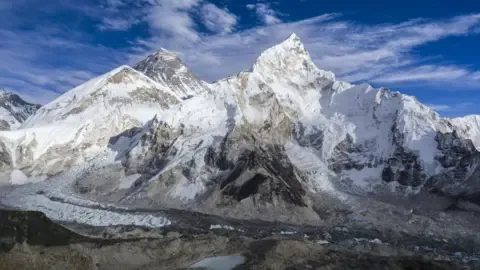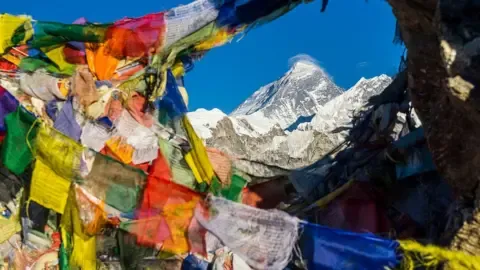Mount Everest, the world’s highest peak, has witnessed one of the deadliest years on record, with a staggering number of fatalities attributed to unpredictable weather patterns caused by climate change. The figure is alarming, with a total of 12 people confirmed dead, and another five missing and presumed dead, according to the Himalayan Database.
The Nepal tourism department has confirmed the grim statistic, attributing the high number of deaths to the changing weather conditions. Director Yuba Raj Khatiwada stated, “The main cause is the changing in the weather. This season the weather conditions were not favourable, it was very variable. Climate change is having a big impact in the mountains.”
The figure is likely to make this year one of the worst on record, matching the 2014 events when 17 people died, mostly local sherpas killed in an avalanche. On average, five to 10 people die on Everest annually, but recent years have seen a worrying spike.
Among the victims were Jason Kennison, a 40-year-old Australian mechanic who had overcome spinal injuries to reach the summit but couldn’t make it back down, a Canadian doctor, Pieter Swart, and three Nepalese sherpas who perished in an avalanche in April. Those still missing include solo Hungarian climber Suhajda Szilárd, who scaled the mountain without a sherpa guide or additional oxygen, and an Indian-Singaporean climber feared to have fallen off the mountain.
The Nepal government has been criticized for issuing a record 479 permits this year, with many experts warning that the high number of climbers is exacerbating the environmental pressure on the mountain. Ang Norbu Sherpa, president of the Nepal National Mountain Guide Association, contends that too many permits are being issued, and it’s placing a strain on the environment.

Experts and celebrated mountaineers have also warned that Everest is now seen as a “tourist destination” and a playground for thrill-seeking rich individuals, with little experience of climbing at high altitude, who are willing to pay exorbitant sums to be guided to the summit. Alan Arnette, a mountaineer who climbed Everest in 2011, lamented the chaos this year, attributing the high number of deaths to inexperienced clients who push themselves too hard and don’t turn back soon enough.
The increased human activity at Everest base camp, located on the Khumbu glacier, is also making it unstable and unsafe, exacerbating the dangerous conditions created by global warming. According to a recent survey, Everest’s glaciers have lost 2,000 years of ice in just 30 years. A plan was put forward last year to move the base camp to a lower spot, off the thinning glacier, but resistance from the sherpa community has stalled the initiative.
The high number of climbers is also escalating the problem of rubbish left on Everest, with local guides stating that the mountain is still littered with trash, particularly plastic, at the end of every season. The introduction of a £3,200 “garbage deposit” has slightly improved the situation, but more needs to be done to address the issue.

